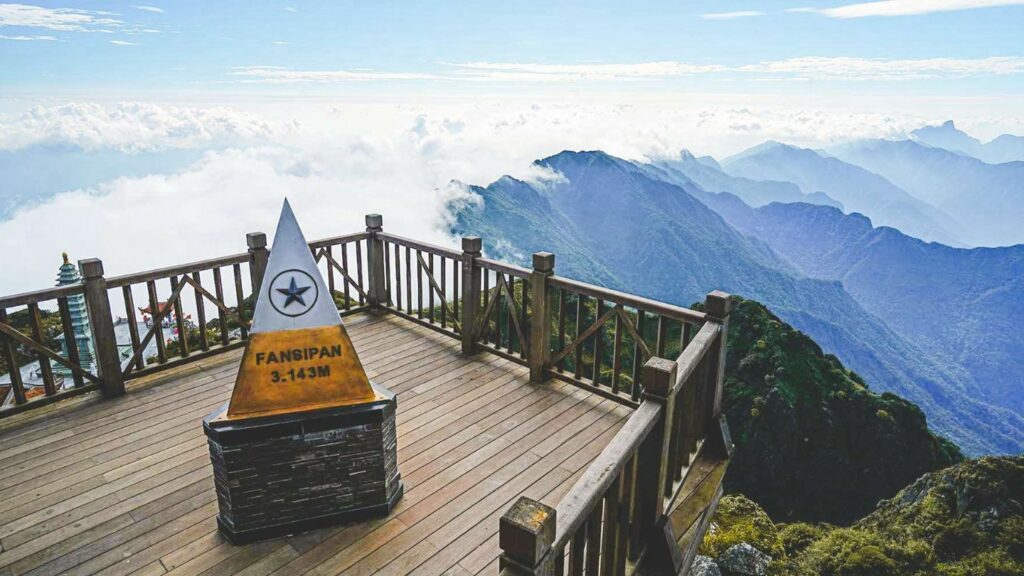Nestled in the breathtaking Hoàng Liên Son mountain range of Northern Vietnam, Fansipan Mountain has captivated adventurers, nature lovers, and cultural explorers alike. Standing tall at 3,147.3 meters (10,326 feet) above sea level, it holds the distinguished title as the highest peak in Indochina, encompassing Vietnam, Laos, and Cambodia. But is Fansipan the highest peak of Indochina? Absolutely — and climbing it is one of the most iconic experiences in Vietnam.
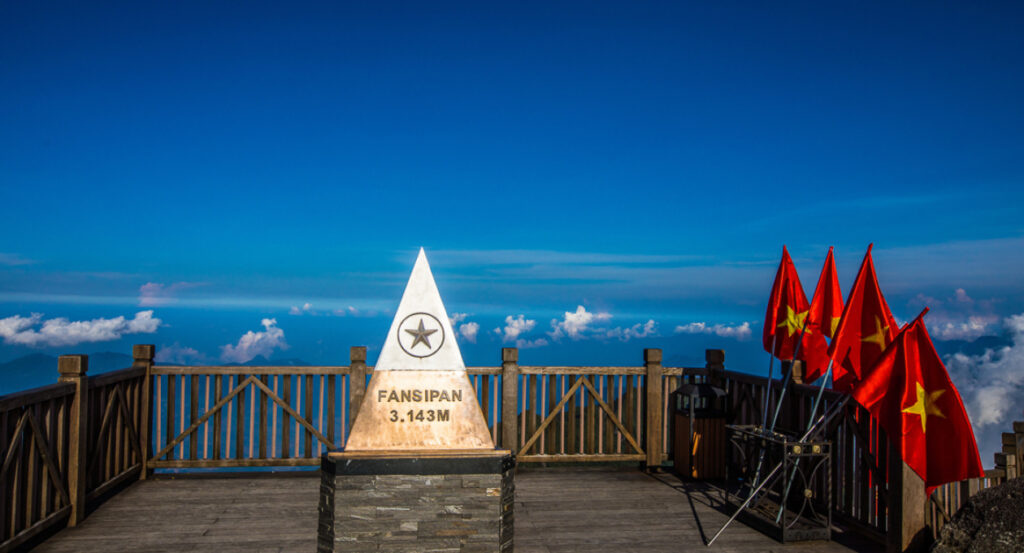
Whether you’re seeking a physically demanding Sapa trekking experience or prefer to admire the panoramic views from a cable car, Fansipan Mountain offers unforgettable memories.
Where is Fansipan Mountain?
Fansipan is located just 9 km southwest of Sapa, a charming hill station in Lào Cai Province, Northern Vietnam. The mountain lies within Hoàng Liên National Park, a protected area known for its rich biodiversity and rugged landscapes. It has long been considered the “Roof of Indochina” and is both a natural and cultural icon of the region.
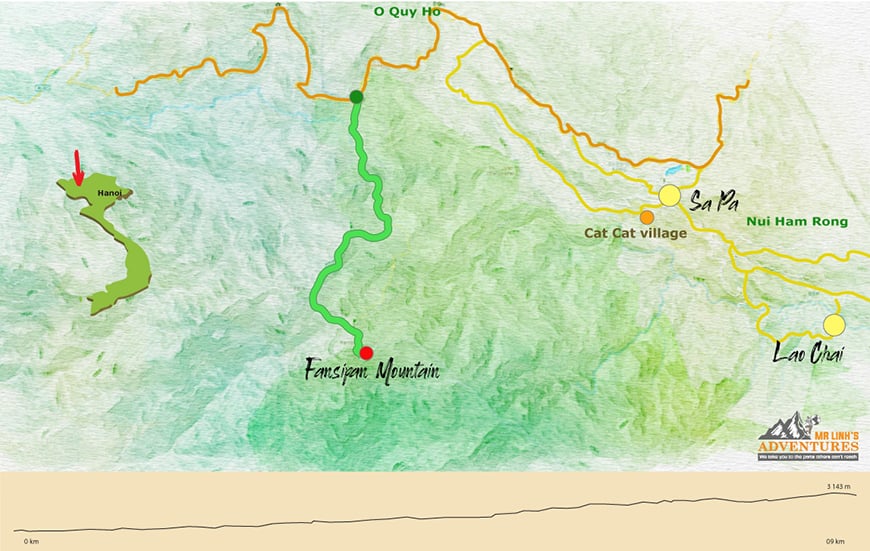
Is Fansipan the Highest Peak of Indochina?
Yes. At 3,147 meters, Fansipan is officially the highest mountain in the Indochinese Peninsula, outpacing any peaks in Laos or Cambodia. This makes it a bucket-list destination for adventure seekers and mountain lovers across Southeast Asia.
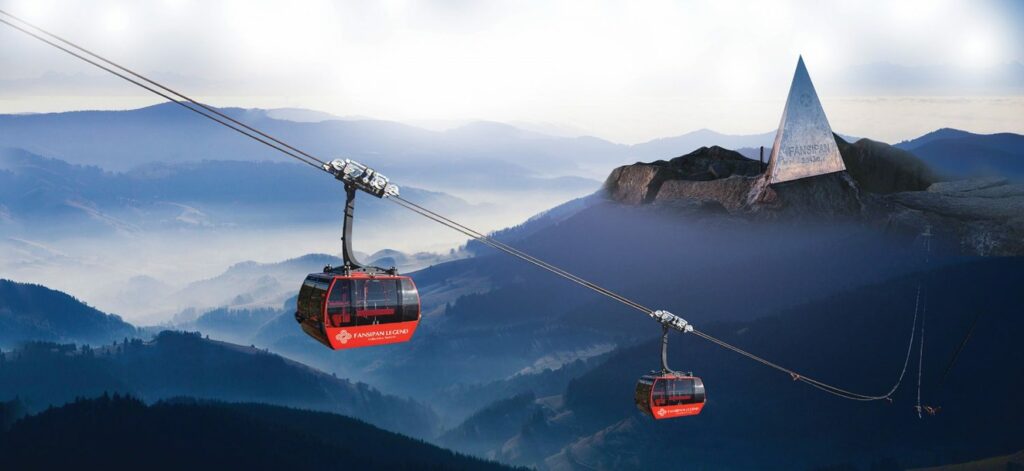
Climbing Fansipan used to be a feat that only seasoned trekkers dared to attempt. However, recent developments such as the Fansipan cable car system have made it more accessible to all kinds of travelers.
How to Get to Fansipan
Most travelers start their journey from Hanoi to Sapa, either by overnight train or sleeper bus. Once in Sapa, Fansipan Mountain is just a short drive away. You can choose between:
-
Trekking routes (1–3 days, depending on your level)
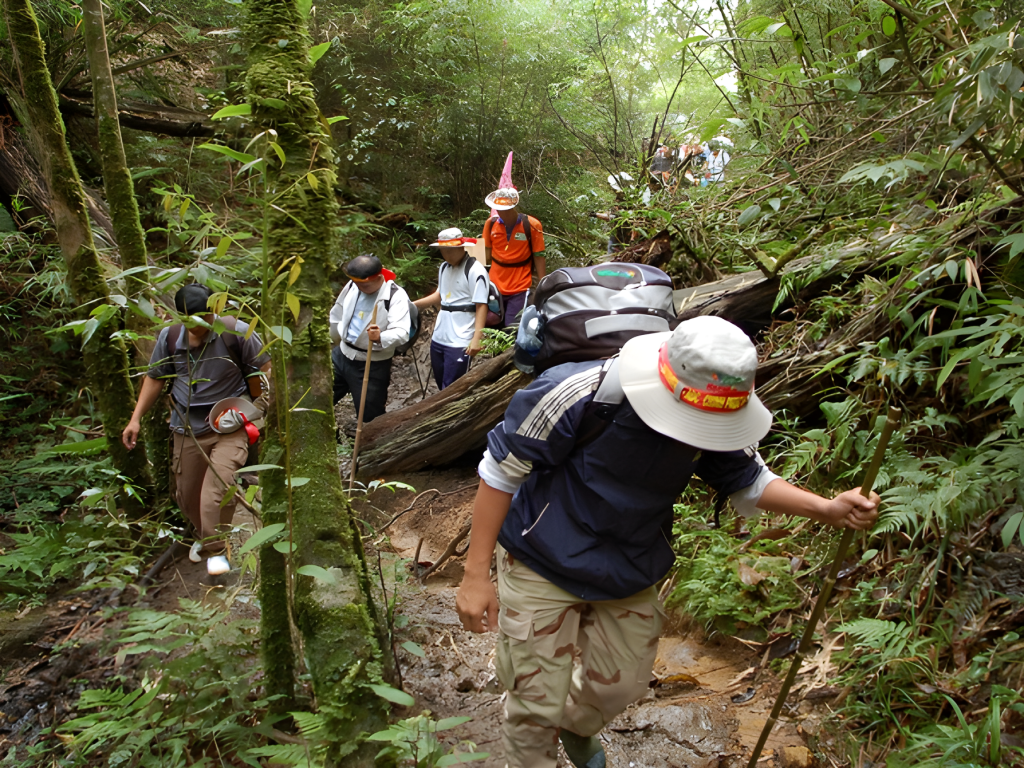
-
Cable car experience (15 minutes one-way)
For those on a Sapa tour, many itineraries include either the trekking option or the cable car experience as part of the package.
Sapa Trekking to Fansipan
If you’re into adventure and nature, the Sapa trekking route to Fansipan is a must. You’ll hike through dense forests, cross mountain streams, and climb steep paths with breathtaking views. The journey can be challenging, especially in foggy or wet conditions, but the reward is incomparable.
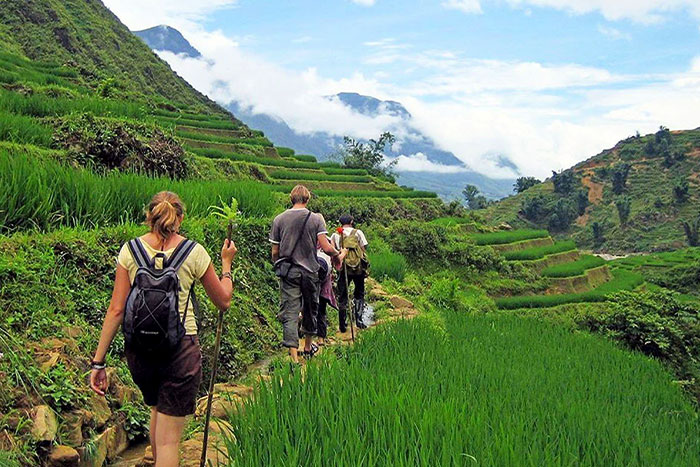
There are three main trekking routes:
-
Tram Ton Route (easiest, ~2 days)
-
Sin Chai Route (more challenging)
-
Cat Cat Route (toughest, least frequented)
Local guides and porters are highly recommended, not only for safety but also for cultural insights along the trail.
Fansipan by Cable Car
For travelers who prefer convenience or travel with family, the Fansipan Legend Cable Car is a modern marvel. Opened in 2016, this three-rope cable car system holds two Guinness World Records and can carry you from the Muong Hoa Valley to near the summit in about 15 minutes.
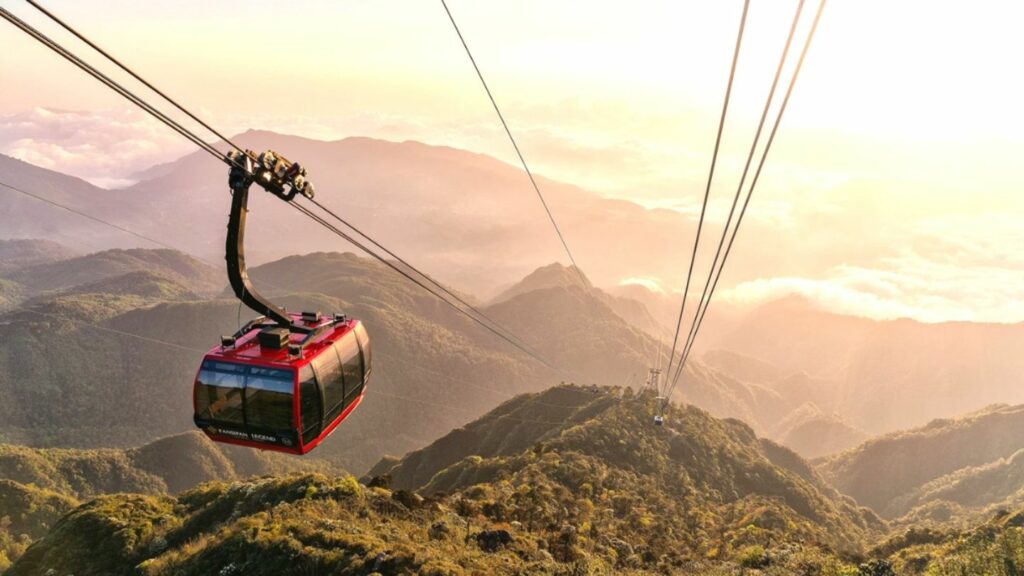
After disembarking, you can either:
-
Climb the remaining 600+ steps to the summit
-
Take a funicular ride to reach the top more easily
The view from the summit includes an expansive panorama of clouds, terraced rice fields, and rugged mountain landscapes stretching across Northern Vietnam.
What to See at the Summit of Fansipan
Besides the spectacular natural scenery, Fansipan is home to a complex of Buddhist structures, temples, and statues built to honor the spiritual significance of the mountain. Key highlights include:
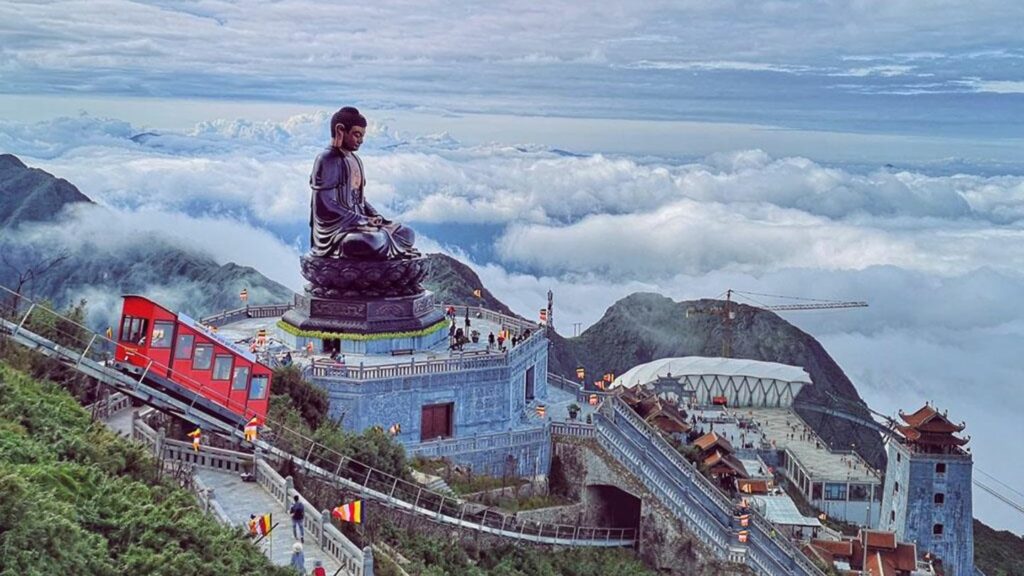
-
The Great Buddha Statue – Standing 21.5 meters tall, it is one of the largest bronze statues in Vietnam.
-
Trinh Pagoda and Bich Van Thien Tu – Sacred places for worship and reflection
-
The Flagpole – Marking the summit point with pride
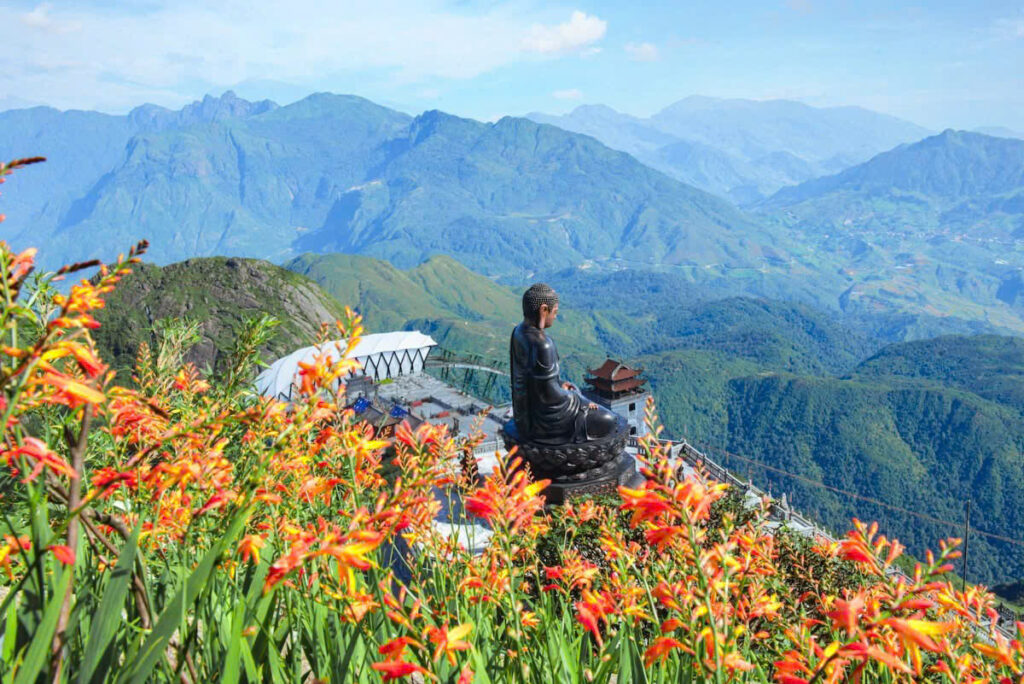
Reaching the summit gives visitors a feeling of achievement — whether they trek or take the cable car.
Best Time to Visit Fansipan Mountain
The best time to visit Fansipan Mountain is from September to November or March to May. During these months, the weather is dry and skies are clear, making it perfect for both trekking and sightseeing.
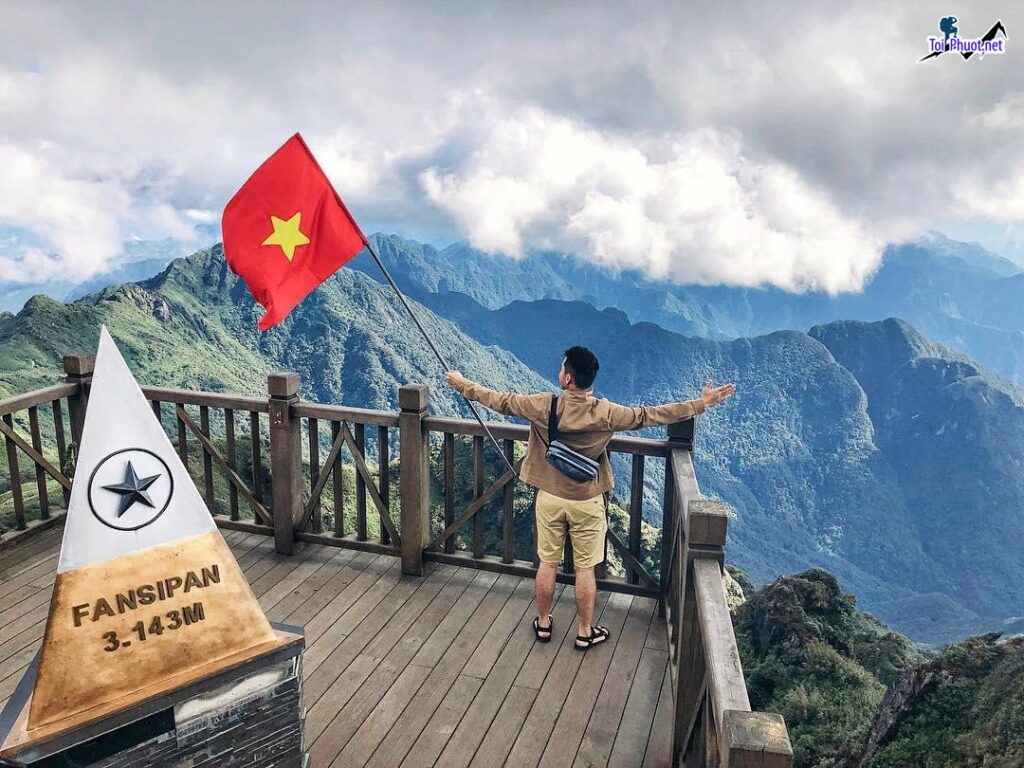
-
Spring (March–May): Blooming flowers, comfortable weather
-
Autumn (September–November): Clear skies, golden rice terraces
-
Avoid: Heavy rains from June to August and extreme cold from December to February
If you’re on a Sapa tour, consider timing your visit during these months for the best overall experience.
See more: Best Time to Visit Sapa Vietnam: A Complete Seasonal Guide
Why Fansipan Should Be in Your Sapa Tour Itinerary
A visit to Fansipan enhances any Sapa tour by offering a blend of culture, nature, and thrill. From the authentic Sapa trekking adventure to the luxurious cable car ride and spiritual complexes at the summit, it caters to all travel styles.
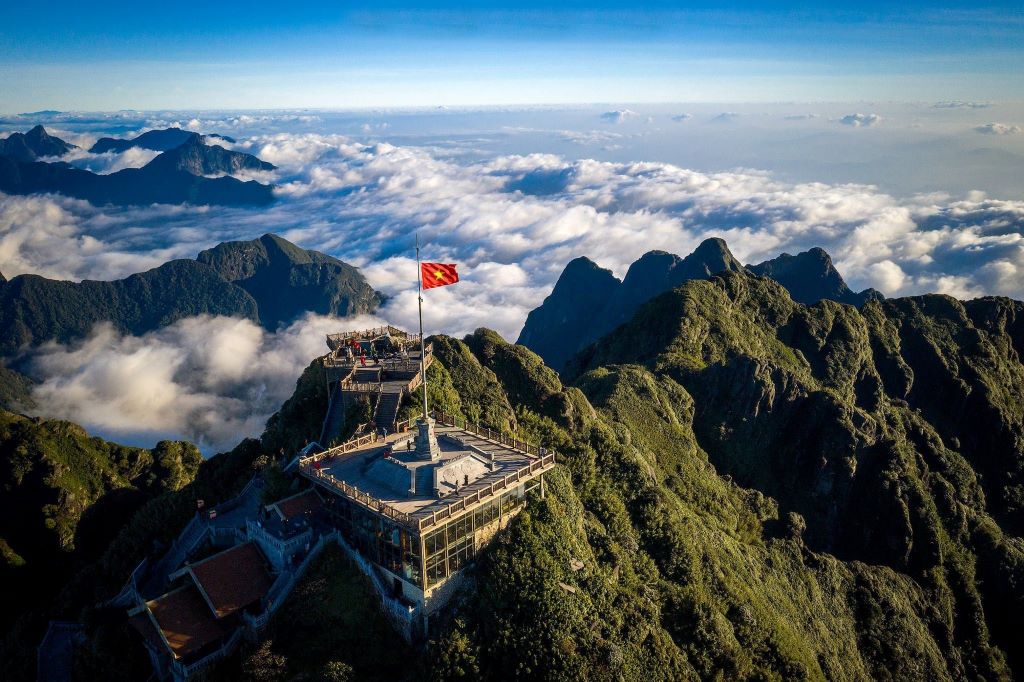
Incorporating Fansipan into your Sapa itinerary allows you to:
-
Explore ethnic minority villages along the way
-
Take in some of Vietnam’s most dramatic landscapes
-
Experience the pride of standing atop the Roof of Indochina
Travel Tips for Fansipan Visitors
-
Clothing: Layered clothing for mountain weather; it gets chilly near the top
-
Footwear: Hiking boots if trekking; sturdy shoes even for cable car visitors
-
Tickets: Cable car and funicular tickets are available online or in Sapa town
-
Guides: Essential for trekkers, optional for cable car users
-
Altitude: If you’re sensitive, move slowly near the summit
Conclusion: Conquer the Roof of Indochina
Fansipan Mountain is more than just a peak — it’s a symbol of adventure, culture, and the stunning natural beauty of Northern Vietnam. Whether you’re asking, “Is Fansipan the highest peak of Indochina?” or planning your ultimate Sapa trekking challenge, this mountain will not disappoint.
Add it to your Sapa tour and discover why countless travelers have called it the highlight of their Vietnam journey.




